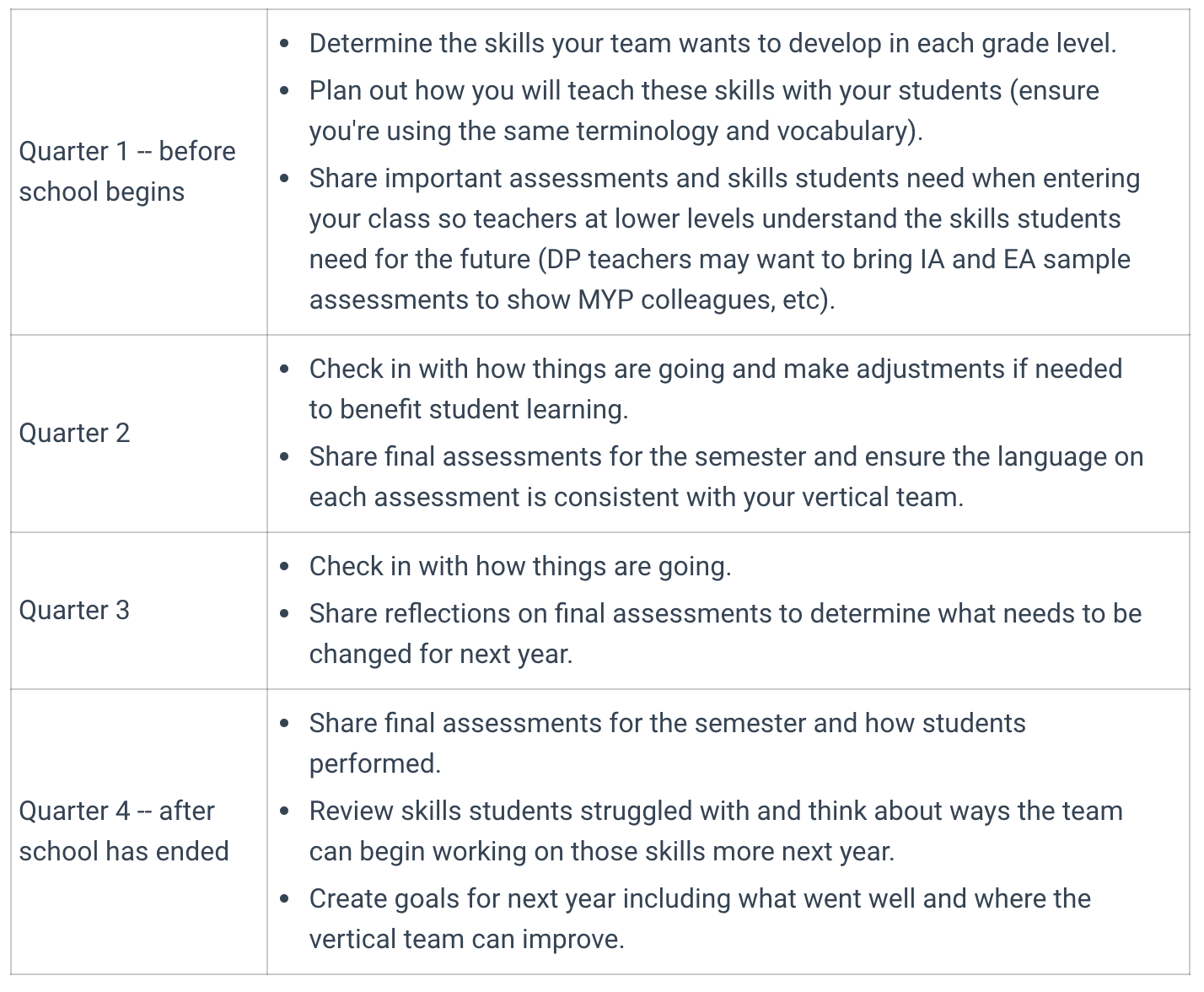The Importance of your Vertical Team
Ibtrove
Whether you are a PYP, MYP, DP, or CP teacher, your vertical team is important. A vertical team is the teachers who are teaching students in the grades below yours and the grades above yours -- hence the term vertical. It is a type of professional learning community and a way for teachers to gain professional development from their colleagues.
In the MYP and above, your vertical team usually comprises only your subject area. For example, if you are teaching MYP 4 Language & Literature, your vertical team would be the MYP 1-3 teachers, the MYP 5 teacher, and perhaps the DP L&L teachers.
In the MYP and above, your vertical team usually comprises only your subject area. For example, if you are teaching MYP 4 Language & Literature, your vertical team would be the MYP 1-3 teachers, the MYP 5 teacher, and perhaps the DP L&L teachers.
Why work with your vertical team?
When you communicate and plan with your vertical team, you can ensure your students are learning what they need to learn to scaffold the skills they will need in their future classes, and that you are using the same language with your students that their previous teachers have used and their future teachers will use. These collaborative teams build strong instructional practices for both you and your colleagues.
AMLE shows how vertical teams are a best practice for teachers since "Vertical teams foster creative, bold teacher leadership and encourage a culture of professional collaboration and shared responsibility. Successful graduates are successful not just because of their accomplishments in high school their accomplishments in high school are clearly connected to their preparation in middle school. So, too, the struggling student's experience in middle school is more clearly recognized for its potential long-term outcome, and steps can be taken before it is too late. Middle and high school teachers, working together, can more easily see where each level contributes to the overall growth of students." (amle.org)
How often should we meet and what should we meet about?
It is best to meet at minimum twice throughout the school year. The most important meeting will be before your students begin school so you can plan what you will be teaching and how you will be teaching the content with your vertical team.
If you're able to meet once a quarter, we recommend using this type of schedule:

A note about collaboration:
In the IB, we focus so much on teaching collaboration and good communication with our students -- with the IB Learner Profile, the ATLs, and in the ATTs. Working with your colleagues in a vertical team gives you more experience working with teachers who you may not work with very often. For example, Edutopia's article reminds teachers that "'Protocols set the expectation that this is about the work, not about the personalities involved [...] Building success through a protocol begins to help others see the value of a colleague's contribution. For instance, an inquiry protocol about a student work sample and the kind of thinking that had to have occurred to make it focused on students, not adult dynamics. This is always a win because teachers walk out of a meeting knowing they have done something right by kids.' Protocols and agendas not only keep the focus on the students' work rather than the teachers' personalities, but they also assure that everyone is on point during their collaboration time. They foster efficient and productive collaboration, and they help collaborators see their colleagues' value." (edutopia.org)
Final Thoughts
We've included an example of a vertical team meeting document that you can use, if it's helpful.
Do you use vertical team planning meetings at your school? What more best practice tips would you add to help teachers just starting out?
Featured links
This work/product/service has been developed independently from and is not endorsed by the International Baccalaureate Organization. International Baccalaureate®, Baccalaureat International®, Bachillerato Internacional® and IB® are registered trademarks owned by the International Baccalaureate Organization.
Copyright © 2025
Copyright © 2025
